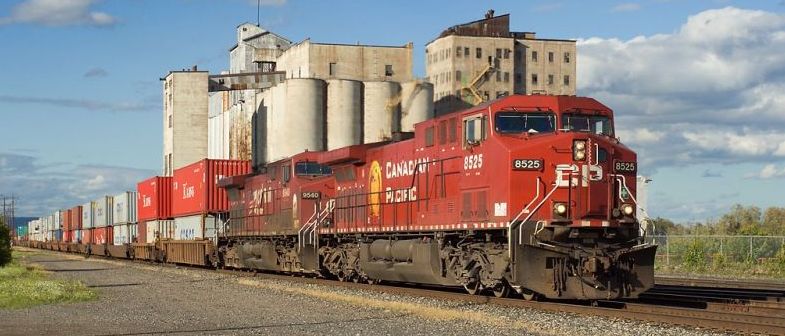
Train Addiction Help Line: 1.866.840.7777
P2K Northeastern Center Cupola Caboose - Chessie/WM Safety #901806 Orange/Lg Safety Slogan (SKU 920-31258)
Universally recognized, the Northeastern caboose is noted for main line or short line service throughout the country. Born on the Reading, this caboose has served its original owners and secondhand owners for over 50 years.
In 1919, the United States Railroad Administration completed plans for a steel-framed car with external wood sheathing, designed to resist the heavy load placed on it by pusher engines. This USRA designed center cupola caboose served as a basis for a variety of other caboose designs, (including narrow gauge) built by individual railroads.
Recognizing the need to replace its vast fleet of four-wheeled cabooses, the Reading adapted the USRA design as a foundation and went a step further to create an all-steel car. The first ten cars were built in 1924, 100 cars were in operation by the mid-thirties, with the last cars of this type built in 1948. The earlier cars had typical hardware and appliances of the day: Westinghouse Type K air brake, left-handed end ladders and walks, and riveted archbar trucks with coil springs. Modernization soon lead to the use of: Duryea Cushion underframe (to absorb coupling shocks), walkways equipped with Diamond safety tread, roof walks flush mounted to the roof, grab irons mounted to end walks, AB brakes, and Andrews trucks. Of the 295 cars built, the Reading still listed 290 on the roster in 1953 and 284 in 1957. As traffic declined, serviceable cars were sold off. Taken over by Conrail, Reading?s fleet was dispersed in the sixties and seventies, with many roads picking up secondhand cars.
Next to the Reading, the Lehigh Valley production, of 140 cars over 10 years, was the most extensive. Simply classed NE, these cars in their final years were dressed in a veritable rainbow of colors. Many cars received an oil heater, and most were equipped with sliding screens on cupola and side windows. The sixties found the Lehigh Valley with excess cars, and many were sold off to equipment dealers and found their way into second-hand service. By the time Lehigh Valley was taken over by Conrail, 92 cars were left on the roster.
Ready to run with PROTO 2000 Couplers
AAR Type B Trucks with Finely Molded Sideframes
Scale Size Grabirons, Handrails, See-Thru chain Links, Grating & Steps
Non-Magnetic Blackened Metal Wheels
Laser Quality, Prototypically Correct Printing & Lettering

$30.00 US